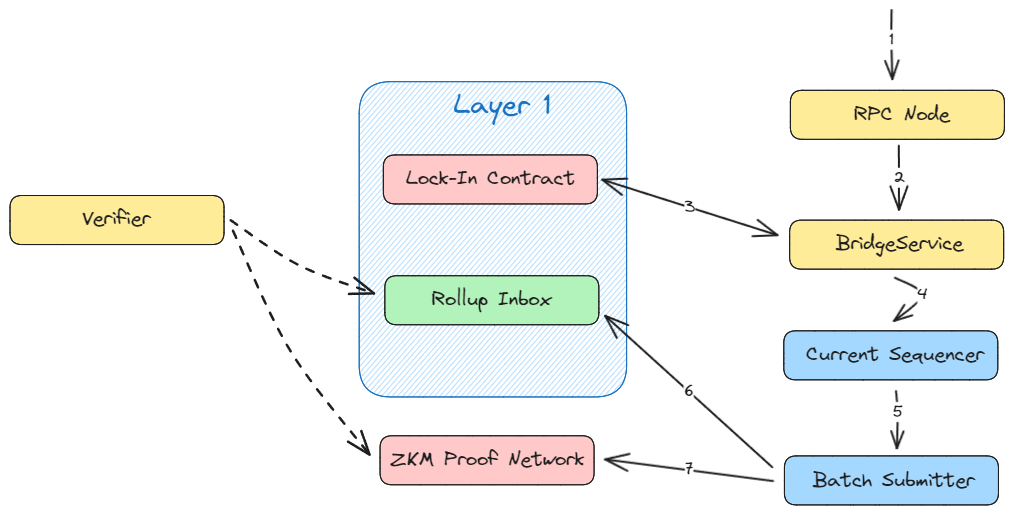Sequencer Node Overview
Welcome to the GOAT Network Sequencer Node Overview! This guide provides a comprehensive introduction to running a Sequencer Node on the GOAT Network, including prerequisites, system requirements, and the locking process.

Why Run a Sequencer Node?
Running a Sequencer Node on the GOAT Network offers several benefits:
- Decentralized Infrastructure: Participate in a decentralized network that enhances security and censorship resistance.
- Bitcoin Settlement: Leverage Bitcoin's security for transaction settlement.
- Incentives: Earn rewards for processing transactions and maintaining network integrity.
Prerequisites
Before setting up a Sequencer Node, ensure you meet the following prerequisites:
- Locking Requirement: BTC and other assets are required as a security deposit.
- Whitelisting: Contact the GOAT Network team to get whitelisted.
- Technical Expertise: Experience in running high-availability infrastructure and blockchain nodes.
- Secure Key Management: Implement robust security for private key management.
System Requirements
Hardware Configuration
- CPU: Equivalent to c5.2xlarge or similar
- RAM: 32GB
- Storage:
- Root directory with at least 40 GiB of space
- EBS gp3, 100 GiB, 3000 IOPS, mounted to
/data
Network Configuration
- IPv4 Elastic IP (EIP) required
- Security Group Rules: Ensure your server's firewall allows inbound traffic on the following ports:
- 30303: goat-geth P2P (UDP/TCP)
- 26656: goat P2P Port (TCP)
Software Environment
- Operating System: Ubuntu 20.04 or higher
- Docker and Docker Compose: For containerized deployment
- Golang: Latest stable version (currently 1.23)
Deployment Steps
- Generate Sequencer Key: Use the GOAT Docker container to generate your sequencer key.
- Start the Sequencer Node: Set up and run your node using Docker Compose.
- Sync Status Check: Monitor blockchain sync to ensure full synchronization.
- Locking Process: Lock the asserts as a security deposit using the provided locking contract details.
Locking Contract Details
- Alpha Mainnet Address:
0xbC10000000000000000000000000000000000004 - Testnet3 Address:
0xbC10000000000000000000000000000000000004
Locking Asset Manager Operations
- Safe Lock: Securely lock your BTC.
- Safe Unlock: Unlock your BTC when needed.
- Exit Sequencer Node: Exit the network if necessary.
Support Resources
- RegTest Sequencer Node: GitHub Repository (opens in a new tab)
- Community Support: Telegram (opens in a new tab)
⚠️
The Locking Asset Manager features are under testing. Exercise caution and monitor announcements.
This overview provides a high-level understanding of running a Sequencer Node on the GOAT Network. For detailed instructions, refer to the Running a Sequencer Node guides.